Lithium-ion car batteries mark a major step forward in automotive power systems, replacing the older lead-acid units that have powered vehicles for decades. Instead of lead plates submerged in acid, these modern batteries use lithium-ion cells to store and deliver energy. This change brings many advantages that appeal to car owners who want efficiency and reliability.
One of the most visible differences is weight. Lithium car batteries can be up to 60–70% lighter than comparable lead-acid models. A lighter battery can improve overall vehicle balance, make acceleration more responsive, and reduce energy consumption. For anyone aiming to enhance their car’s performance and efficiency, moving to lithium technology is often a smart upgrade.
Beyond their lighter build, lithium-ion car batteries deliver more energy in a smaller size. They provide consistent power for quick engine starts and remain dependable even in extreme weather. Most models also last two to five times longer than traditional batteries, which means fewer replacements and reduced long-term costs.
Many newer lithium batteries include built-in battery management systems (BMS). These smart circuits monitor temperature, charge cycles, and voltage, helping to keep the battery safe and efficient. Such features explain why more car owners now consider lithium batteries a reliable investment for better daily performance.
Advantages of Lithium Car Batteries
Lithium-ion car batteries have drawn attention because they improve both driving experience and maintenance needs compared with lead-acid batteries.
Lightweight: Often less than half the weight of standard lead-acid batteries, which can make steering feel smoother and enhance fuel economy in conventional cars as well as range in electric vehicles.
Longer life: Many lithium batteries last 8–10 years under proper care, far outlasting the typical 3–5 years of lead-acid versions.
Fast charging: Modern designs can recharge to full capacity in 1–3 hours, far quicker than the long charging times often required by older types.
Resilient in temperature extremes: Lithium batteries usually work well in both hot summers and cold winters, making them dependable for daily commutes or long road trips.
Low maintenance: Sealed casings and BMS functions reduce the need for routine service and fluid checks.
These combined qualities—lighter weight, quick charging, long life, and consistent performance—make lithium batteries highly appealing to car owners seeking reliable and modern energy solutions.
Lithium vs. Lead-Acid Car Batteries
When comparing car battery options, the difference between lithium and lead-acid remains significant:
Performance: Lithium batteries provide higher energy density and stronger starting power (cranking amps), which means reliable starts even in cold weather.
Charging speed: Lithium versions often reach a full charge in a fraction of the time required by lead-acid batteries, saving downtime.
Durability: Lithium batteries can withstand many more charge–discharge cycles, making them more cost-effective over their service life.
Weight: Lighter lithium batteries can enhance acceleration and even help with fuel efficiency.
Cost: Lithium batteries usually cost more at purchase, but their long life and reduced maintenance often balance out the initial expense.
Maintenance: Lithium batteries are sealed and generally maintenance-free, while lead-acid types need periodic fluid checks and careful upkeep.
Overall, the shift to lithium offers clear long-term benefits despite a higher upfront price.
also read : Where to Find the Best Car Digital Multimedia Solutions?
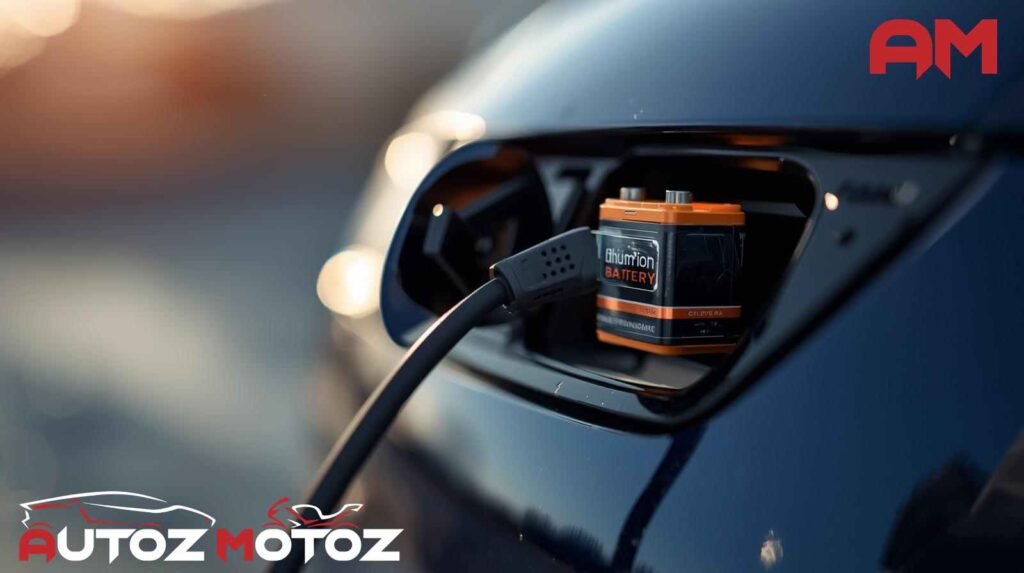
Best Design Concept All Over the World : Draft
1. Compact Pouch Layout
Design pattern: Thin laminated layers sealed in flexible foil, perfect for space-saving packs.
Longevity: Often sustains 1,000–1,500 full cycles with good thermal stability when cooled properly.
Safety parameter: Lower risk of rupture due to flexible casing but needs smart thermal management to prevent swelling.
Fresh insight: Popular in urban EVs and power tools where lightweight structure improves energy density and packaging freedom.
2. Cylindrical Roll Cell
Design pattern: Classic rolled-up electrode sheets in a metal can, still widely used because of reliability.
Longevity: Typically offers 2,000+ charge cycles in automotive-grade versions with advanced electrolyte mixes.
Safety parameter: Rigid steel shell protects against mechanical stress; modern venting systems prevent pressure build-up.
Fresh insight: Recent upgrades include 4680-size cells that improve both energy output and cooling performance.
3. Prismatic Block Stack
Design pattern: Flat rectangular cells arranged like books on a shelf, optimizing module packing density.
Longevity: Around 1,500–2,000 cycles; enhanced electrode coatings slow capacity loss over years of driving.
Safety parameter: Strong aluminum housing resists puncture and is easier to monitor for swelling.
Fresh insight: Favored in many European and Asian EV platforms thanks to modular assembly and simplified recycling.
4. Blade-Style Configuration
Design pattern: Long, thin cells resembling blades stacked tightly in a pack, maximizing volume efficiency.
Longevity: Often delivers 3,000+ charge cycles due to optimized cell cooling and less internal resistance.
Safety parameter: Lower risk of thermal runaway thanks to the long and flat form factor with wider heat dissipation surface.
Fresh insight: Gained popularity with several Chinese EV makers for its slim structure and lower cost per kilowatt-hour.
5. Solid-State Pouch
Design pattern: Uses a solid electrolyte layered in flexible pouches, replacing conventional liquid solutions.
Longevity: Promises 5,000+ cycles in prototypes, with less degradation from dendrite growth.
Safety parameter: Highly resistant to fire or leakage because of non-flammable electrolyte.
Fresh insight: Seen as a key enabler for next-generation EVs aiming for ultra-fast charging and improved energy density.
6. Lithium Iron Phosphate (LFP) Modular
Design pattern: Cells are often prismatic or cylindrical but grouped in modular blocks for consistent power delivery.
Longevity: Known for 3,000–4,000 cycles, maintaining a high degree of usable capacity even after years.
Safety parameter: Very stable cathode chemistry reduces fire risks and handles high temperatures well.
Fresh insight: Gaining traction in mass-market EVs and energy-storage stations due to lower cost and durability.
7. High-Nickel Layered Pouch
Design pattern: Nickel-rich cathodes layered inside a pouch, boosting energy density for extended driving range.
Longevity: Modern coatings enable 2,000+ cycles while minimizing structural decay of the cathode.
Safety parameter: Needs precise thermal controls because nickel-heavy chemistries can overheat under stress.
Fresh insight: Widely adopted in premium EV brands targeting long-range performance and high-power acceleration.
8. Silicon-Anode Hybrid
Design pattern: Blends silicon into the anode structure for higher lithium uptake, usually in pouch or cylindrical form.
Longevity: Typically reaches 1,000–1,500 cycles, with ongoing improvements in silicon stability.
Safety parameter: Controlled expansion of silicon particles is essential to prevent cracking and short circuits.
Fresh insight: Emerging as a game-changer in fast-charging EV platforms, promising shorter charging times without losing range.
9. Dual-Cell Stack Pack
Design pattern: Integrates two matched cells in one structural unit to balance load and thermal output.
Longevity: Usually good for 2,000+ cycles, thanks to reduced stress on each individual cell.
Safety parameter: Balanced current flow limits hot spots and helps maintain uniform temperatures.
Fresh insight: Used in heavy-duty EVs and trucks needing high power bursts without rapid degradation.
10. Thin-Film Flexible Sheet
Design pattern: Ultralight thin-film electrodes laminated on bendable substrates, suitable for unconventional shapes.
Longevity: Often about 800–1,000 cycles, with new coatings pushing endurance higher.
Safety parameter: Minimal risk of catastrophic failure but needs protective layers to avoid puncture damage.
Fresh insight: Increasingly used in wearable automotive sensors and futuristic interior power panels.
11. Semi-Solid Flow Configuration
Design pattern: Uses a gel-like semi-solid electrolyte pumped through cell channels, merging battery and flow-cell concepts.
Longevity: Targets 3,000+ cycles in development prototypes by reducing electrode wear.
Safety parameter: Lower flammability than liquid designs and easier heat control due to continuous electrolyte flow.
Fresh insight: Promising for long-range EV fleets and grid storage, offering scalable pack sizes.
12. Heat-Regulated Honeycomb Pack
Design pattern: Cells arranged in a honeycomb lattice to improve airflow and heat dissipation inside the module.
Longevity: Generally achieves 1,500–2,000 cycles under controlled temperature ranges.
Safety parameter: Better airflow and smart thermal sensors reduce risks of thermal runaway.
Fresh insight: Favored in next-gen SUVs and high-performance EVs needing reliable thermal balance for long journeys.
13. Smart-BMS Integrated Pack
Design pattern: Combines cells into packs with advanced Battery Management System chips directly embedded.
Longevity: Improved by 10–15% compared to traditional packs due to smarter charge balancing.
Safety parameter: Early fault detection and real-time analytics minimize hazard risks.
Fresh insight: Increasingly adopted for connected cars where predictive diagnostics reduce maintenance costs.
14. Micro-Structured 3D Electrode
Design pattern: Electrodes engineered with microscopic 3D scaffolds that allow faster ion movement and cooling.
Longevity: Often rated for 2,000–3,000 cycles, still being refined for commercial roll-out.
Safety parameter: More uniform ion flow reduces hot-spot formation and mechanical stress.
Fresh insight: A potential breakthrough for ultra-fast-charging EV stations, reducing wait times dramatically.
15. Ultra-Cold-Resistant Module
Design pattern: Specialized materials and internal heaters optimized for extreme winter conditions.
Longevity: Maintains around 80% capacity after 1,000+ cycles in sub-zero temperatures.
Safety parameter: Thermal insulation and robust casings prevent cell rupture in freezing environments.
Fresh insight: Targeted at northern-region EV markets and off-road vehicles requiring steady performance in harsh climates.
20 Brands All Over the World : Overview

CATL (Contemporary Amperex Technology Co. Ltd.)
Annual output: ~339.3 GWh (≈ 339.3 million kWh).
Type / innovation: LFP & NMC cells; fast development of silicon-dominant and cell-to-pack tech.
Energy system: EV and large-scale ESS.
Charging: Optimized for fast charging and thermal stability.
Origin: China (Ningde).
Distributor / partners: Tesla, VW, BMW, Hyundai, many OEMs.
Outcome: Keeps global lead with aggressive capacity expansion and Europe plants — expect continued market share growth.

BYD
Annual output: ~101 GWh (≈ 101.0 million kWh).
Type / innovation: Proprietary LFP “Blade” battery emphasizing safety and pack density.
Energy system: EVs + ESS; strong vertical integration (cells to cars).
Charging: Battery chemistry tuned for longevity and quick top-up routines.
Origin: China (Shenzhen).
Distributor / partners: BYD EVs globally; sells cells to external OEMs.
Outcome: Rapid capacity growth and close OEM integration make BYD a top contender.

LG Energy Solution
Annual output: ~280–310 GWh range reported (company guidance & industry estimates) — roughly 280–310 million kWh.
Type / innovation: NCM and advancing cylindrical / pouch cells; heavy R&D on gigafactory tech.
Energy system: EV packs, ESS, grid storage projects.
Charging: High-power cell formats for faster charge rates.
Origin: South Korea.
Distributor / partners: GM, Rivian, Hyundai, European OEMs.
Outcome: Large global footprint and strategic contracts keep it in top tier.

Panasonic Energy
Annual output: ~35–73 GWh in U.S. footprint (recent Kansas plant adds capacity; global production higher) — cite company capacities (e.g., 32 GWh Kansas plant = 32 million kWh capacity locally).
Type / innovation: Cylindrical cells (2170/4680), long partner history with Tesla; solid-state R&D.
Energy system: Automotive cells, consumer cells, ESS.
Charging: Supports high energy density for longer range and efficient fast charging.
Origin: Japan (major US facilities).
Distributor / partners: Tesla, Panasonic global supply chain.
Outcome: Re-ramping US manufacturing improves supply security for OEMs.

Samsung SDI
Annual output: tens of GWh (global mix) — (company reports vary; industry estimates place it in top 10).
Type / innovation: NMC pouch & cylindrical cells, focus on EV and ESS chemistry balancing energy and longevity.
Energy system: EVs, two- and four-wheel, stationary storage.
Charging: Cells designed for steady high-power cycles and safe fast charging.
Origin: South Korea.
Distributor / partners: BMW, Ford, other global OEMs.
Outcome: Strong tech pedigree but facing stiff competition from Chinese makers; focusing on specialty high-end segments.

CALB (China Aviation Lithium Battery)
Annual output: large single-digit to low-hundreds GWh scale across factories (industry estimates) — (many million kWh).
Type / innovation: LFP and NMC offerings; focus on cost-effective EV solutions.
Energy system: EVs and ESS.
Charging: Compatible fast charge; many OEM integrations.
Origin: China.
Distributor / partners: Multiple Chinese OEMs and export partners.
Outcome: Rapid expansion in China’s mid-market EV space.

A123 Systems (Wanxiang)
Annual output: several GWh (specialty high-power LFP/NMC variants).
Type / innovation: High-power LiFePO4 and LTO variants for longevity and fast charge.
Energy system: Automotive, commercial vehicles, performance applications.
Charging: Excellent cycle life and rapid charge capability in some chemistries.
Origin: USA / China (owned by Wanxiang).
Distributor / partners: Aftermarket, specialized OEMs.
Outcome: Niche leader for high-power, long-cycle applications.
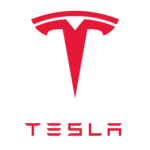
Tesla
Annual output: Estimated at hundreds of GWh globally through Gigafactories and partner plants.
Type / innovation: Pioneers in high-nickel NCA and advanced LFP chemistries; pushes structural battery packs and 4680 cylindrical cells for efficiency and cost reduction.
Energy system: Primarily EV powertrains and large-scale energy storage (Powerwall, Megapack).
Charging: Ultra-fast Supercharger network integration with strong thermal management for rapid, safe charging.
Origin: United States.
Distributor / partners: Direct-to-consumer plus global OEM and energy-sector collaborations.
Outcome: Market-defining innovations driving high-range EVs and industry-leading energy density.

Gotion High-Tech
Annual output: mid-double digit GWh range (industry estimates).
Type / innovation: LFP / NCM cells, CATL competitor in China.
Energy system: EV batteries + battery module systems.
Charging: Cells tailored for EV pack fast charging.
Origin: China.
Distributor / partners: Local OEMs; expanding overseas partnerships.
Outcome: Growth focus with international footprint goals.
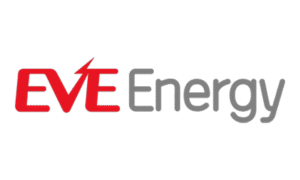
EVE Energy
Annual output: double-digit GWh scale (growing).
Type / innovation: Cylindrical and pouch cells; strong NCM and LFP lines.
Energy system: EV, ESS, consumer electronics cells.
Charging: Designed for robustness in charge cycles.
Origin: China.
Distributor / partners: OEM partnerships in China and abroad.
Outcome: Rapid scale-up and R&D push in competitive niches.
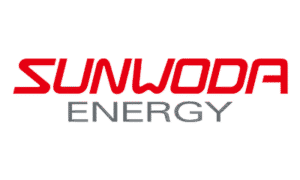
Sunwoda
Annual output: growing GWh capacity across plants (double-digit GWh).
Type / innovation: Pouch cells, module integration, specialization in mobile & EV packs.
Energy system: EV packs and consumer cells; ESS projects.
Charging: Focus on efficient thermal management for charging.
Origin: China.
Distributor / partners: Chinese OEMs and global electronics brands.
Outcome: Scaling quickly to capture both EV and electronics demand.

SVOLT
Annual output: mid/high single-digit to low double-digit GWh (est.).
Type / innovation: NMC and new cell formats; strong safety R&D.
Energy system: EV battery packs, module systems.
Charging: Cells optimized for thermal performance during high rate charge.
Origin: China.
Distributor / partners: Global OEM partnerships expanding.
Outcome: Investing in specialty tech to win OEM designs.

Farasis Energy
Annual output: single-digit to double-digit GWh (growing).
Type / innovation: High-density NMC pouch cells, focus on pack design.
Energy system: EVs, especially premium segments.
Charging: Supports high-power charging in tailored packs.
Origin: China (and EU/US facilities).
Distributor / partners: European and Chinese OEMs.
Outcome: Expanding into Europe and North America with local plants.

Envision AESC
Annual output: double-digit GWh (historic Nissan supplier scale).
Type / innovation: NMC pouch specialist; battery integration know-how.
Energy system: EVs and stationary storage.
Charging: Packs engineered for EV fast charging and safety.
Origin: China / Japan (Envision acquisition of AESC).
Distributor / partners: Nissan (historically), other OEM collaborations.
Outcome: Repositioning under Envision for global growth in EV supplies.

Northvolt
Annual output: lower-double digit GWh (Europe ramping).
Type / innovation: Sustainable cell manufacturing, recycled materials focus.
Energy system: EVs and large ESS.
Charging: Cells and modules for EV OEMs; lifecycle emphasis.
Origin: Sweden.
Distributor / partners: VW (partnership), European OEMs.
Outcome: European local supplier championing green manufacturing and recycling loops.

Saft (TotalEnergies)
Annual output: industrial/ESS focus; several GWh (est.).
Type / innovation: Industrial lithium systems, tailored ESS solutions.
Energy system: Grid and industrial storage, telecoms, aerospace niches.
Charging: Grid-scale charging/integration features; safety focus.
Origin: France (TotalEnergies ownership).
Distributor / partners: Utilities, industrial OEMs.
Outcome: Strong for stationary and OEM industrial contracts; complements oil-to-energy transition.

Microvast
Annual output: single-digit to low double-digit GWh (fast-growing).
Type / innovation: Fast-charge capable cell chemistries and packs for commercial vehicles.
Energy system: Buses, trucks, commercial fleets, some EV segments.
Charging: Designed for ultra-fast charging cycles and longevity.
Origin: USA / China.
Distributor / partners: Fleet operators, bus OEMs.
Outcome: Targeting rapid adoption in commercial mobility and depot charging networks.

Lishen (Tianjin Lishen Battery)
Annual output: several GWh (est. major Chinese cell maker).
Type / innovation: Cylindrical & pouch cells for EVs and consumer uses.
Energy system: EVs, ESS, consumer electronics.
Charging: Standard fast-charge compatibility for automotive packs.
Origin: China.
Distributor / partners: Domestic OEMs and export customers.
Outcome: Steady regional supplier with growing export ambitions

Kokam
Annual output: specialist GWh scale (focus on high-performance packs).
Type / innovation: High-power pouch cells, energy storage modules.
Energy system: EVs, ESS, aerospace & defense niches.
Charging: Engineered for high discharge/charge rates and safety.
Origin: South Korea.
Distributor / partners: Industrial OEMs and energy companies.
Outcome: Niche leader for demanding high-power applications.

Toshiba (SCiB / Power Solutions)
Annual output: specialized production (several GWh in specialty chemistries).
Type / innovation: SCiB (fast-charge, long life, LTO-style tech) and advanced cell types.
Energy system: Rapid-charge fleets, hybrid systems, some EV niches.
Charging: Exceptional fast-charge capability and cycle life.
Origin: Japan.
Distributor / partners: Automotive and industrial OEMs.
Outcome: Holds valuable fast-charge niche and safety credentials for specific markets.
Also read : The Cheapest Tesla Model Electric Vehicle

Compact & Modern Types for Lithium-ion
1. Lithium Nickel Manganese Cobalt Oxide (NMC)
Type description: A versatile, widely used cathode chemistry that balances energy density and safety by combining nickel, manganese and cobalt in varying ratios (e.g., 111, 532, 622, 811). Ideal when you need good range without extreme cost.
Advantages: High energy density for long driving range, reasonably good cycle life, adaptable by changing Ni:Mn:Co ratios.
Technology: Layered oxide cathode with graphite (or graphite/Si blend) anodes; manufacturers tune Ni content to boost capacity.
Applications: Mid- to long-range EVs, plug-in hybrids, energy storage; common in many OEM packs.
Charging feature: Supports high-power charging in modern pack designs but higher-Ni mixes can require tighter thermal management and careful BMS algorithms.
Related topics / possible outcomes: NMC811 pushes density but raises thermal and stability demands; many OEMs balance NMC with LFP to optimize cost vs range.
2. Lithium Nickel Cobalt Aluminum Oxide (NCA)
Type description: A nickel-rich cathode family offering very high specific energy — used when range and power density are the top priorities.
Advantages: One of the highest energy densities among Li-ion chemistries; enables long-range EVs and performance models.
Technology: Layered nickel-dominant oxide with small amounts of cobalt and aluminum to improve structure and lifespan; typically matched with graphite anodes.
Applications: Premium EVs and performance cars where range and weight matter most; used in large-format cylindrical cells too.
Charging feature: Enables fast charging with advanced cell cooling and BMS; needs careful thermal controls because of oxidation risk at high state-of-charge.
Related topics / possible outcomes: Excellent for high-end EVs; increasing scrutiny over cobalt sourcing and safety means OEMs pair NCA with tough battery management and supply diversification.
3. Lithium Iron Phosphate (LFP)
Type description: Iron-phosphate cathode chemistry known for thermal stability, long life and low cost — a workhorse for value and safety.
Advantages: Outstanding cycle life, excellent thermal and chemical stability (safer under abuse), lower cost thanks to iron vs cobalt/nickel.
Technology: Olivine-structured cathode paired with graphite; often used in prismatic or pouch formats; “blade” LFP variants push pack density.
Applications: Mass-market EVs, buses, entry-level cars, and large stationary storage where longevity and safety outweigh top energy density.
Charging feature: Good tolerance to fast-charging cycles with robust thermal design; slightly lower energy density requires larger packs for the same range.
Related topics / possible outcomes: LFP adoption is growing (especially for mid-range EVs and China market dominance); new LFP pack designs improve volumetric density and cost-per-km.
4. Lithium Manganese Oxide (LMO / spinel)
Type description: A spinel cathode with strong power capability and good thermal behavior; often blended with other chemistries to complement performance.
Advantages: High specific power (fast discharge/charge), good safety and thermal stability, lower cost than cobalt-rich types.
Technology: 3D spinel crystal structure enabling good ion mobility; commonly paired with graphite anodes; sometimes used in hybrid cathode mixes (e.g., NMC/LMO blends).
Applications: Powertrain applications requiring bursts of current (power EVs, hybrid systems), and certain portable or stationary uses.
Charging feature: Handles high C-rates well; ideal where fast power delivery/recapture (regenerative braking) matters.
Related topics / possible outcomes: Often selected where power > absolute energy; blending LMO with NMC improves lifetime and reduces cobalt use.
5. Lithium Cobalt Oxide (LCO)
Type description: One of the earliest Li-ion cathodes; LCO delivers high energy density but trades off cost, thermal profile and cycle life.
Advantages: High gravimetric energy density — useful where compact energy matters.
Technology: Layered cobalt oxide cathode with graphite anode; widely used in consumer electronics historically.
Applications: Primarily phones, laptops, and legacy EV concepts; less favored for modern mass EVs due to cost and thermal concerns.
Charging feature: Good single-cell energy but requires conservative charging and strong BMS for automotive safety.
Related topics / possible outcomes: Cobalt sourcing and ethics push the auto industry away from pure LCO toward NMC, NCA or LFP for cars.
6. Lithium Titanate (LTO / Li₄Ti₅O₁₂)
Type description: A unique anode chemistry (titanate) that enables very fast charging and extremely long cycle life at the cost of lower energy density.
Advantages: Ultra-fast charge capability, excellent low-temperature performance, outstanding cycle life and safety.
Technology: Replaces graphite anode with titanium oxide; paired with appropriate cathodes to manage voltage window.
Applications: Buses, commercial vehicles, heavy-duty fleets, fast-charge depot systems and safety-critical applications.
Charging feature: Can accept high C-rates repeatedly with minimal degradation — ideal for frequent fast-charge duty cycles.
Related topics / possible outcomes: Not mainstream in passenger EVs due to size/weight, but gaining traction in commercial mobility where uptime and longevity trump range.
7. Lithium-Polymer (Li-Po / Polymer electrolyte)
Type description: More a packaging/electrolyte approach than a cathode change — polymer electrolytes allow thin, flexible pouch cells and tailored form factors.
Advantages: Lightweight, flexible packaging; can be shaped to fit vehicle cavities; often safer than loose liquid electrolytes when well designed.
Technology: Uses a gelled or solid polymer electrolyte (or polymer-soaked separator) with standard cathodes/anodes; commonly in pouch format.
Applications: Consumer electronics, some EV pack modules and niche automotive modules where space/shape optimization matters.
Charging feature: Comparable charging behavior to equivalent chemistries; thermal design and pouch swelling must be managed for fast charging.
Related topics / possible outcomes: Li-Po enables creative pack designs (thin modules, curved packs); polymer advances also feed into solid-state research.
8. High-Nickel NMC (e.g., NMC811)
Type description: A high-nickel recipe within the NMC family that pushes energy density by increasing nickel proportion (e.g., Ni:Mn:Co = 8:1:1).
Advantages: Higher specific energy and lower cobalt content vs older mixes; better range-per-mass for EVs.
Technology: Requires advanced coatings, electrolyte additives and thermal management to control reactivity; often paired with Si-blended anodes.
Applications: Long-range cars and performance EVs chasing maximum pack energy.
Charging feature: Supports fast charging but with tighter thermal windows and increased BMS sophistication to avoid accelerated aging.
Related topics / possible outcomes: A trade-off between cost (less cobalt) and stability — much industry R&D focuses on coatings and additives to stabilize high-Ni cathodes.
9. Lithium Nickel Manganese Oxide High-Voltage (LNMO / LiNi0.5Mn1.5O4)
Type description: A high-voltage spinel cathode offering higher operating voltage (~4.7V) and potential for better power and energy.
Advantages: High voltage → better energy density and power output; relatively cobalt-light.
Technology: Spinel structure with tailored surface coatings to handle oxidative electrolytes at high voltage.
Applications: Performance EVs, hybrid systems, and where higher pack voltage reduces inverter size/weight.
Charging feature: High cell voltage can complicate electrolytes — advanced additives needed for safe fast charging and longevity.
Related topics / possible outcomes: Promising for next-gen packs but needs electrolyte and interface engineering to be automotive-ready at scale.
10. Silicon-enhanced / Silicon-dominant anode Li-ion
Type description: Graphite anodes augmented (or partly replaced) by silicon to boost capacity; silicon stores more lithium per gram than graphite.
Advantages: Significant step up in specific capacity → higher range or smaller pack size for the same range.
Technology: Silicon particles or silicon-oxide blends in composite anodes; binder and electrolyte tricks reduce silicon’s expansion damage.
Applications: Passenger EVs where range improvement is prioritized; often found in new cell chemistries and next-gen packs.
Charging feature: Fast charging possible, but silicon requires clever charge-management to avoid rapid capacity loss; pulse charging and limited top-state-of-charge help.
Related topics / possible outcomes: Silicon anodes are a major near-term pathway to higher range; OEMs combine them with protective coatings and optimized BMS.
11. Anode-free (Anode-less) lithium batteries
Type description: Emerging design that eliminates a traditional anode (no graphite) at manufacture; lithium is plated onto a current collector during the first charge.
Advantages: Very high initial energy density and simpler cell build; potential weight savings.
Technology: Requires precisely controlled lithium plating/stripping and advanced electrolyte/additive systems to avoid dendrites and capacity fade.
Applications: Future EV cells aiming for the lightest, densest packs if plating reliability can be solved.
Charging feature: Sensitive to charge protocols — charging speed must prevent dendritic growth; BMS and electrolyte tech are critical.
Related topics / possible outcomes: High promise but still R&D-heavy; safety and cycling remain the main barriers to mass automotive usage.
12. Solid-State Lithium (Solid Electrolyte Li-ion)
Type description: Replaces the liquid electrolyte with a solid one (ceramic, sulfide, or polymer), improving safety and potentially energy density.
Advantages: Lower risk of thermal runaway, potential for higher energy density and wider temperature tolerance.
Technology: Solid ceramic or polymer electrolytes with lithium metal or silicon anodes in some designs; manufacturing scale and interface stability are engineering challenges.
Applications: Next-generation EVs, premium cars, and safety-critical platforms once manufacturability matures.
Charging feature: Can enable faster, safer charging in theory; practical charging characteristics depend on interface resistance and stack engineering.
Related topics / possible outcomes: Heavy industry investment (OEMs and startups); timelines vary, but mass adoption could reshape EV range & safety metrics.
13. Lithium-Sulfur (Li-S)
Type description: Uses sulfur on the cathode to achieve very high theoretical energy density at low cost; a lithium-metal anode commonly pairs with it.
Advantages: Very high theoretical energy, lightweight and cheap cathode material (sulfur).
Technology: Challenges include polysulfide shuttle (loss of active material) and limited cycle life; solid hosts and electrolyte engineering are being tested.
Applications: Long-range lightweight vehicles, drones, and specialized EV niches if cycle life improves.
Charging feature: Promising for energy density and weight, but existing prototypes need tailored charging profiles to manage degradation.
Related topics / possible outcomes: If durability issues are solved, Li-S could significantly reduce pack weight and cost for some vehicle classes.
14. Lithium-Air (Li–O₂ / Li–air)
Type description: A highly experimental approach using atmospheric oxygen as the cathode reactant to maximize energy density — essentially bio-inspired chemistry.
Advantages: Extremely high theoretical energy density (approaches gasoline energy by mass).
Technology: Major hurdles: reaction reversibility, oxygen management, electrolyte stability and cycle life; mostly at lab stage.
Applications: Long-term, if any — conceptually ultra-long-range EVs or range-extending solutions.
Charging feature: Very complex; real-world fast charging and cycling stability are unresolved.
Related topics / possible outcomes: Revolutionary potential but currently not practical for cars; significant scientific breakthroughs required.
15. Dual-Carbon Batteries
Type description: Both electrodes use carbon-based materials (no traditional Li-metal or heavy metal cathode), aiming for fast kinetics and simpler recycling.
Advantages: Potentially safer, fast charge/discharge rates, simpler recycling and less reliance on critical metals.
Technology: Novel architectures with high-surface carbon cathodes and carbon anodes; still under development for automotive scale.
Applications: Fast-charging urban EVs and specialty uses if energy density and lifetime meet targets.
Charging feature: Naturally suited to high-power charge/discharge due to carbon’s kinetics; lifecycle and density tradeoffs must be solved for cars.
Related topics / possible outcomes: Attractive for sustainability-minded applications; R&D into increasing pack-level energy is ongoing.
16. Gel-polymer electrolyte Li-ion (GPE)
Type description: Uses a gelled polymer electrolyte (a cousin to Li-Po-style tech) giving improved safety and shape flexibility over liquid electrolytes.
Advantages: Reduced leakage risk, improved mechanical stability, and safer thermal behavior vs some liquid systems.
Technology: Polymer matrix holds lithium salt and solvent in a gel; used with standard cathodes/anodes in pouch/prismatic formats.
Applications: Vehicles that benefit from thin/pouch modules, and modules requiring better mechanical resilience.
Charging feature: Charging similar to comparable chemistries; thermal and swelling behavior needs pack-level consideration for fast charge.
Related topics / possible outcomes: A practical intermediate between liquid electrolytes and full solid electrolytes, useful for creative pack designs.
17. Aqueous / Water-in-Salt Lithium-Ion Variants
Type description: Uses water-based electrolytes with “water-in-salt” chemistry to stabilize high-voltage cells while improving safety and environmental profile.
Advantages: Intrinsically safer (non-flammable electrolyte), potentially lower cost and simpler recycling.
Technology: Highly concentrated salt solutions shift electrochemical windows so aqueous systems can approach non-aqueous voltages; still early for autos.
Applications: Stationary storage and niche transport uses initially; automotive adoption needs more stability and energy density gains.
Charging feature: Safer thermal behavior reduces thermal runaway risk; charging regimes depend on electrolyte formulation.
Related topics / possible outcomes: Promising for grid and low-risk mobility use; could complement Li-ion fleets if densities improve.
18.Cell Form Factors: Cylindrical / Pouch / Prismatic (21700, 4680 etc.)
Type description: Not a chemistry but a critical “type” for cars — cell format (cylindrical, pouch, prismatic) strongly affects pack density, cooling, manufacturability and cost.
Advantages: Cylindrical (robust, scalable), pouch (flexible shape, high volumetric use), prismatic (space efficiency, structural packs). New large cells (4680) aim at lower pack cost.
Technology: Same chemistries adapt to different formats; thermal design, modules and mechanical integration differ by format.
Applications: Automakers choose formats based on assembly, crash behavior, cooling strategy and manufacturing scale.
Charging feature: Thermal management is format-dependent: cylindrical cells often favor active cooling; pouch/prismatic need careful compression and cooling to allow fast charging.
Related topics / possible outcomes: Cell format choices (e.g., 21700 vs 4680) remain strategic OEM decisions affecting cost, repairability and pack performance.
19. Cobalt-reduced / Manganese-rich Chemistries (Cobalt-light mixes)
Type description: A family of cathode recipes designed to minimize expensive/controversial cobalt by increasing manganese (or nickel + manganese) shares while keeping performance.
Advantages: Lower cost and improved ethical footprint with comparable energy when engineered well.
Technology: Engineered layered oxides or spinel hybrids with surface coatings and tailored electrolytes to keep cycle life and safety.
Applications: Mass-market EVs where cost per kWh and supply security are priorities.
Charging feature: Similar to their parent chemistries but often require additives/coatings to stabilize fast charging and longevity.
Related topics / possible outcomes: Market trend toward cobalt reduction drives innovation in cathode coatings, recycled materials and alternative mining strategies.
20. Multi-chemistry / Hybrid Pack Approaches (e.g., LFP + NMC mix)
Type description: Practical pack-level “type” where different cell chemistries coexist in a single vehicle pack to optimize cost, range and performance (for instance, LFP modules for steady cruising and NMC modules for peak power).
Advantages: Blends strengths — safety and cost of LFP with high energy of NMC/NCA where needed.
Technology: Sophisticated pack architecture and BMS orchestration route power and manage cycling; thermal segregation and module balancing are key.
Applications: Vehicles needing both long life and occasional high power (e.g., SUVs, PHEVs, performance EVs with value trims).
Charging feature: Charging strategies route current to different modules appropriately; requires advanced BMS and cell matching for fast charging without imbalance.
Related topics / possible outcomes: Hybrid packs are a pragmatic step for OEMs balancing supply risks and customer expectations while the cell market continues to diversify.
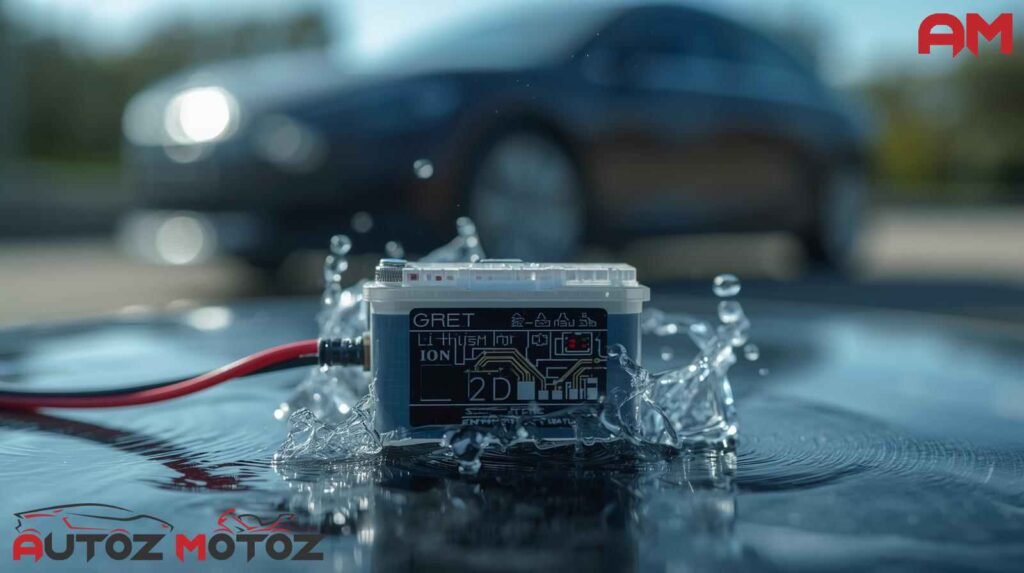
How to Choose the Best Lithium Car Battery
Finding the right lithium-ion battery for your car involves focusing on key points:
Vehicle compatibility: Always confirm the chosen battery meets your car’s voltage, capacity, and size requirements.
Cold-cranking amps (CCA): If you live in a region with cold winters, choose a battery with a strong CCA rating for reliable starts in low temperatures.
Size and weight: Ensure the new battery fits properly in the existing compartment without modifications.
Budget vs. value: While top brands may cost more, their durability and warranty often justify the investment.
Brand reputation: Established manufacturers with good reviews often deliver more dependable products and support.
By keeping these factors in mind, you can select a battery that offers the best performance for your specific driving needs.
Lithium Car Battery Maintenance Tips
Proper care extends both the performance and the lifespan of a lithium car battery:
Charge correctly: Recharge before the battery gets too low (around 20–30% capacity) and avoid overcharging. Use a charger made for lithium batteries.
Mind the storage: If the car is not driven for weeks, store the battery in a cool, dry area or use a maintenance charger to keep it healthy.
Inspect regularly: Check terminals for corrosion and keep connections tight and clean.
Protect from extreme temperatures: While lithium performs better than lead-acid in many climates, prolonged exposure to high heat or freezing cold can still shorten its life.
Common Buying Mistakes to Avoid
Car owners often face issues when buying a lithium battery because of:
Choosing a battery that doesn’t match their car’s specifications.
Ignoring the warranty, which is vital for long-term support.
Skipping research on brands and customer reviews.
Focusing solely on the lowest price and overlooking long-term value.
Avoiding these mistakes helps ensure a smooth purchase and dependable performance.
Safety Guidelines for Lithium Car Batteries
Safety comes first when installing or using lithium batteries:
Monitor temperature: Avoid excessive heat; check during long drives or fast charging.
Watch for warning signs: Stop use if you notice swelling, leaks, unusual odors, or overheating.
Follow proper installation: Secure terminals and avoid loose wiring or incorrect chargers.
Use recommended chargers: Prevents overcharging and minimizes risk of damage.
These habits protect both the battery and your car’s electrical system.
FAQ – Frequently Asked Question
Which lithium battery gives the best value for everyday cars?
For most daily drivers, LFP (lithium-iron phosphate) packs are the best balance of price, safety and lifespan. They deliver long cycle life, good thermal tolerance and lower cost-per-kilometer than many high-nickel cells, making them a practical, low-risk upgrade.
How do I check if a lithium battery fits my car?
Confirm the battery’s voltage, physical dimensions and terminal layout against your owner’s manual or the OEM part number. Also verify cold-cranking amps (CCA) and mounting compatibility—many suppliers list vehicle fitment guides to make this quick.
What charging behavior extends battery life the most?
Avoid deep discharges and prolonged high-state-of-charge (100%) stints; top off the battery before it drops below 20–30%. Use a charger specifically for lithium chemistry and enable BMS balancing features to reduce wear and keep capacity high.
Are lithium batteries safe during fast charging and extreme weather?
Modern automotive lithium packs with a quality BMS and thermal management are safe for fast charging and operate reliably across wide temperatures. Still, look for batteries with proven thermal controls and manufacturer guidance for fast-charge limits and cold-weather starts.
What should I expect for lifespan and when to replace the battery?
Most car-grade lithium batteries last **5–10 years** or several hundred to a few thousand cycles depending on chemistry and use. Replace when capacity drops significantly (commonly below ~70–80% usable capacity) or if BMS flags persistent faults.
How do warranties and recycling impact my buying decision?
Prioritize brands offering multi-year warranties and clear recycling programs—good warranties indicate confidence in longevity, while manufacturer take-back or certified recycling reduces environmental risk and may be required by local laws.
Conclusion
Lithium-ion batteries for cars offer lighter weight, higher power output, faster charging, and longer service life compared with traditional lead-acid batteries.
By choosing a compatible, reputable brand and following good maintenance and safety practices, car owners can enjoy reliable starts, consistent performance, and better long-term value.
As vehicle technology advances, lithium batteries continue to prove themselves as a smart choice for drivers who want both efficiency and peace of mind on the road.
Also read : The Cheapest Tesla Model Electric Vehicle
Tech innovator and business strategist with a foundation in Computer Science and diverse expertise in IT, marketing, and banking. Committed to building disruptive products and customer experiences that shape industries and create global market dominance.

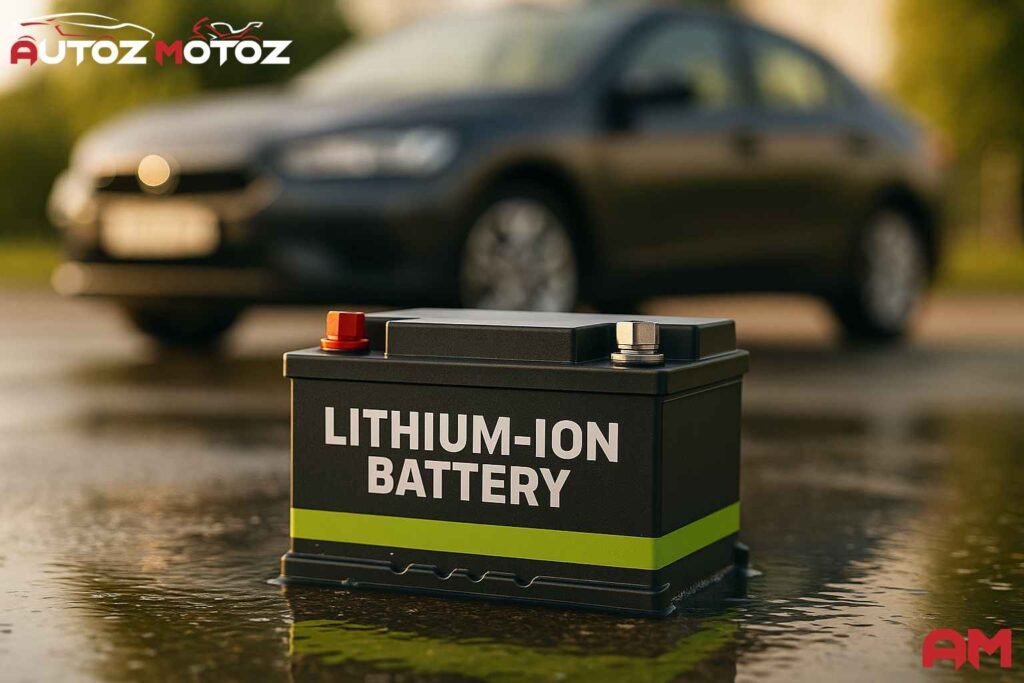

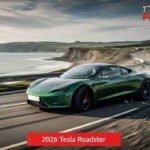



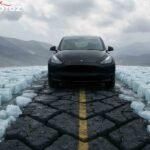
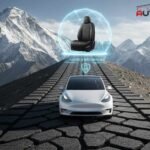
2 Responses